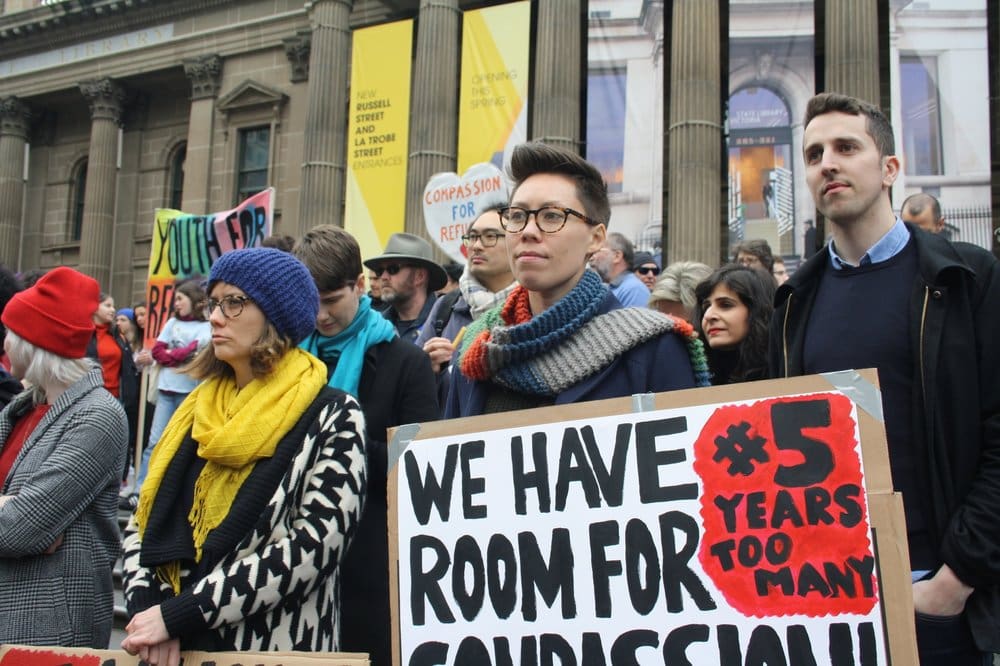Explainer: Victoria’s broken bail laws
People are innocent until proven guilty, and bail means that the police can release a person from custody on the promise that they will go to court at a later date to face the charges alleged against them. If a person applies for bail and that application is denied, they are detained in prison until their court date.
In 2018, the Bail Act 1997 (Vic) (the Bail Act) was changed to make it far harder for people to get bail in more circumstances than before. This is because of:
1. The reverse onus provisions, which require a person to show that ‘compelling reasons’ or ‘exceptional circumstances’ exist for them to be released on bail. If a person is unable to meet the applicable legal test, then bail must be refused.
2. The broad range of offending captured by these reverse onus provisions. Previously, the ‘exceptional circumstances’ test applied only to the most serious offences. Now, if people engage in repeat, low-level wrongdoing – like shoplifting – they can be held to the same standard as people accused of the most violent and dangerous crimes.
The Victorian Government changed the Bail Act in response to James Gargasoulas killing six people and injuring many others in a violent car attack on Bourke Street while he was on bail.
While the changes to the laws were intended to target extreme act of violence by men, they are disproportionately impacting women experiencing disadvantage, and Aboriginal and Torres Strait Islander women. Corrections Victoria data shows that 53 per cent of women in Victorian prisons are unsentenced and that that 89 per cent of Aboriginal and Torres Strait Islander women entering prison are unsentenced.
This is because more women are being denied bail, not because they pose a risk to the community, but because they themselves are at risk – of family violence, homelessness, economic disadvantage and mental illness.[1] Intersecting forms of disadvantage make it hard for women to put forward a case in favour of bail, which is making time behind bars the default setting in too many cases.
Criminalising women, instead of supporting them, only serves to further entrench them in the criminal legal system. The vast majority of women in prison are mothers and even just a short time in prison means that women risk losing their children, as well as their homes, jobs and connection to the community.
Reform needed
To fix Victoria’s broken bail laws, the Victorian Government must:
1. Repeal the reverse-onus provisions in the Bail Act, particularly the ‘show compelling reason’ and ‘exceptional circumstances’ provisions (sections 4AA, 4A, 4C, 4D and Schedules 1 and 2 of the Bail Act).
2. Create a presumption in favour of bail for all offences, with the onus on the prosecution to demonstrate that bail should not be granted due to there being a specific and immediate risk to the physical safety of another person or the person posing a demonstrable flight risk.
3. Insert an explicit requirement in the Bail Act that a person may not be remanded for an offence that is unlikely to result in a sentence of imprisonment.
4. Repeal the offences of committing an indictable offence while on bail (section 30B), breaching bail conditions (section 30A) and failure to answer bail (section 30).
This explainer is not legal advice
The contents of this publication do not constitute legal advice, are not intended to be a substitute for legal advice and should not be relied upon as legal advice. You should seek legal advice or other professional advice in relation to any particular matters you or your organisation may have.
[1] Russell et al., A Constellation of Circumstances: The Drivers of Women’s Increasing Rates of Remand in Victoria (2020) Fitzroy Legal Service and the La Trobe Centre for Health, Law and Society: Melbourne.

Timeline: Offshore detention
For 12 years Australia has has inflicted cruelty and punishment on refugees and asylum seekers who came here seeking safety.
Read more
Explainer: Yoorrook Justice Commission finds systemic racism and calls for action
An explainer on the Yoorrook Justice Commission's final reports released on 1 July 2025.
Read more
Human rights briefing: Victoria’s anti-protest laws
The Victorian Government is proposing four major restrictions on the right to protest.
Read more



